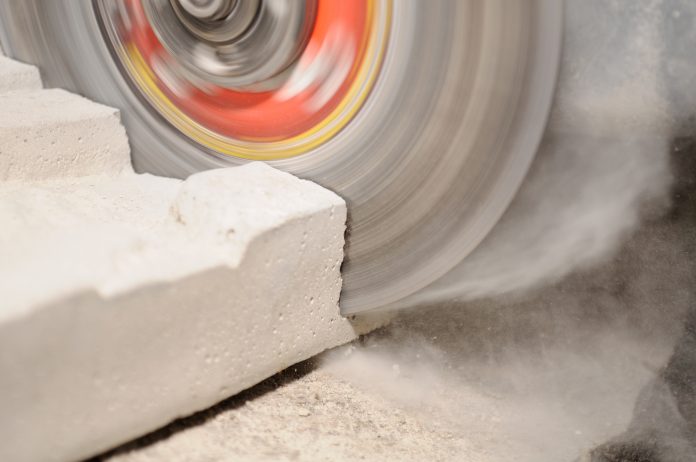As the intense focus on silica dust continues, Tim Turney from air monitoring equipment specialist Casella shares his insights on protecting construction workers
The Health & Safety Executive (HSE) inspected construction sites throughout June 2022 as part of its month-long respiratory health initiative, Dust Kills. As the watchdog checks that employers and workers know the risks, plan their tasks and use the right controls, other initiatives are taking place to crack down on silica dust.
The All-Party Parliamentary Group (APPG) for Respiratory Health is currently conducting a follow-up inquiry into silica dust and its impact on the construction industry. As an expert in reducing worker exposure to crystalline silica through the development of advanced air sampling monitoring technology, Casella welcomed the opportunity to provide evidence to help save workers’ lives. However, as the intense focus on silica dust continues, it is increasingly apparent that businesses must do more to protect workers from the substance that many are calling “the next asbestos”.
Crystalline silica
Silica is found in varying amounts in most rocks, sand and clay, and is a major constituent in construction materials made from these resources, including bricks, tiles and concrete. Workers can breathe in silica dust while cutting, sawing, drilling or crushing materials.
Silica has a crystalline form, which occurs naturally in varying amounts in any substance containing silica, that poses potential health concerns. Crystalline silica can damage tissue in the lungs and lead to lung disease, chronic obstructive pulmonary disease or incurable silicosis.
As with any known workplace health risk, a correctly implemented scheme of controls using the hierarchy of controls is the most effective means of reducing worker exposure to respirable crystalline silica.
This can help reduce both the likelihood of workers developing health complications such as silicosis and the potential legal ramifications for employers. Measures include a correctly executed programme of air monitoring, which can include both monitoring at the site level and on an individual employee level using personal sampling pumps. Air monitoring can quantify exposure levels or, if controls are in place, check that they are effective and measure any residual risk.
In control
Businesses can measure worker exposure using personal sampling pumps. However, it is important that the pumps are used with the correct sampling head and in the case of respirable dust a cyclone and filter, which collects the particulate.
Once the sample is analysed by a laboratory, the level of exposure can be calculated. Action can then be taken to improve control measures to ensure exposure is reduced to as low as is practicably possible. Improvements have been made to different elements of personal sampling pumps over time.
Battery technology, back pressure capability, accurate flow control, minimised pulsation and data download have all been improved, ensuring measurement of an individuals’ exposure to harmful substances is as accurate as possible.
Correct implementation of personal sampling relies on a thorough understanding of practice, procedure, how sampling pumps function and use of the correct sampling head and filters.
Correct equipment, calibrated properly
Personal sampling pumps must adhere to the standard ISO 13137:2013. The standard sets limits for required flow stability and maximum permissible pulsation levels, enabling users of personal air sampling pumps to adopt a consistent approach for flow rate assessment.
The standard provides a comprehensive framework that specifies test methods to determine performance of air sampling pumps and ensures that environmental influences such as air pressure and temperature have a minimal impact on the accuracy of the sampled air, which in turn could affect sample results.
Correct equipment – calibrated properly – and an awareness of the limitations and impact on data collection that the equipment itself can have should be at the forefront of correct air monitoring procedures, as well as the fight against “the new asbestos.” Pumps that operate with a pulsation value of less than 10% and conform to all relevant ISO standards give industrial hygienists and site managers the peace of mind that data captured is reliable and unaffected by pump pulsation.
Low pulsations are particularly important when sampling for crystalline silica as the sampling head is a cyclone, and only at low pulsation levels will it get the correct ‘respirable’ sample.
While awareness of silica’s negative health effects is on the rise, correct procedure, safety-focused culture, and the right equipment will ensure that the downward trend in silicosis mortality continues.
Bridging the gap
Employee health must remain a priority and a core component of any workplace health and safety management system. Likewise, monitoring must continue to evolve in accordance with changing production methods, and the industry is already moving in a positive direction.
In addition, education and training that raises workers’ awareness of the risks of dust exposure is integral in ensuring that they understand how to prioritise and protect their health.
Tim Turney
Casella
Tel: +44 (0)1234 844 100














